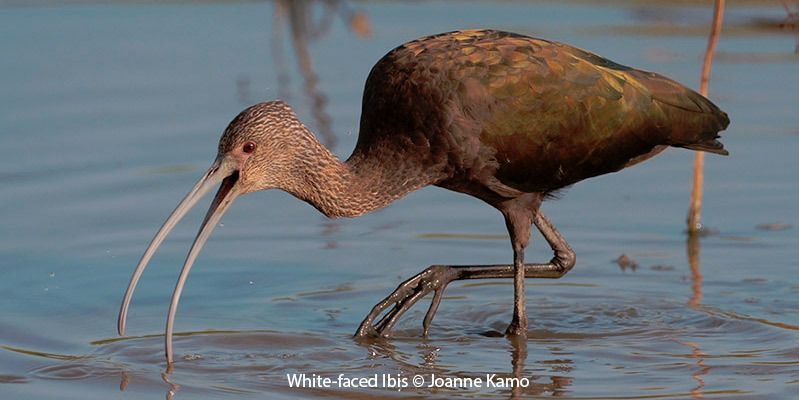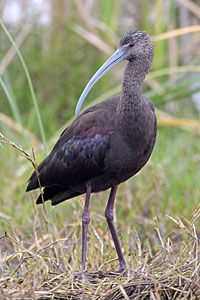
© Greg Lavaty
White-faced Ibis
Plegadis chihi
Family: (Threskiornithidae) Ibises and Spoonbills
Preferred Habitat: Marshes
Seasonal Occurrence: Common spring through fall. Uncommon in winter. Nests in our area.
Notes by Susan Billetdeaux: In breeding plumage, the White-faced Ibis lives up to its name with a bright white band of feathers bordering its red facial skin. Its legs and eyes are also red. Winter birds are very difficult to distinguish from the much less common Glossy Ibis. Both species in winter are a soft dark brown in color. If close-up looks are possible, White-faced Ibises may be recognized by their red eyes. White-faced Ibises prefer freshwater marshes. They nest colonially, building their nests either in trees or on mats of dead vegetation. Numbers are declining throughout North America. Possible causes include the use of pesticides and loss of wetlands. In Texas they are listed as a threatened species.
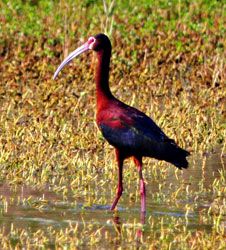
© David McDonald
Profile by Aidan Healey: The White-faced Ibis is a medium-sized wading bird with greenish iridescent wings and a deep reddish-brown head and body. It has a patch of bright white skin on its face and a hefty downward-curved bill, which it uses to probe for food such as insects, worms, frogs, and crabs. White-faced Ibis can be found in marshy areas where there is plenty of shallow water and mud for foraging. When in flight, the White-faced Ibis holds its head straight out forward and its feet straight backward, which gives it a very flat profile and makes its curved bill easily noticeable.
White-faced Ibis can be found across the plains and prairies west of the Mississippi River and – in the summer months – as far north as Canada. They in are the Houston area year-round, though flocks of White-faced Ibis tend to move around day to day in search of marshes with optimal water depths for feeding.
The White-faced Ibis is very similar in appearance to the Glossy Ibis, which is more common further east along the Gulf Coast and along the Atlantic coast up through New England – areas where White-faced Ibis are infrequent. While geographic range is often a clue for separating White-faced and Glossy Ibis, White-faced Ibis can be identified by their red eyes, more reddish legs, and larger patch of white on the face that extends to behind the eye. White-faced Ibis are also slightly larger and less iridescent than Glossy Ibis, but these details are hard to determine without seeing the two species side by side. Young White Ibis may also appear similar to White-faced Ibis, but all juvenile plumages of White Ibis have some patches of white on the underwings, belly, and back, which are easily visible in flight.
-
Cornell Lab of Ornithology
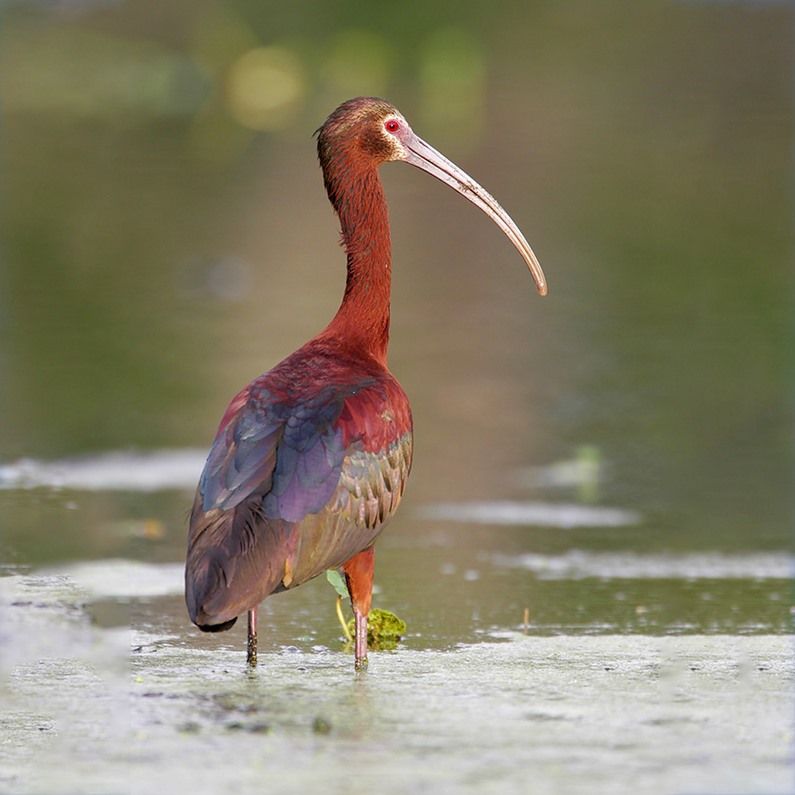
© Greg Lavaty, www.texastargetbirds.com
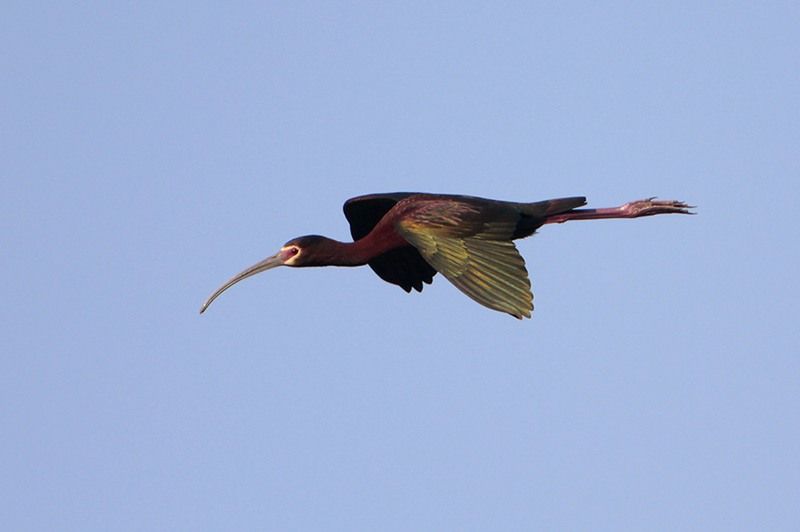
© Greg Lavaty, www.texastargetbirds.com
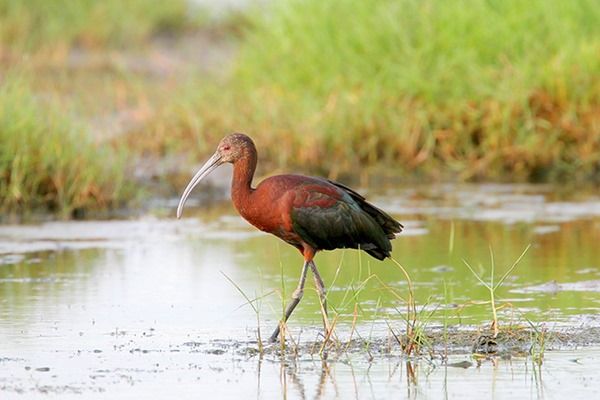
© Greg Lavaty, www.texastargetbirds.com

